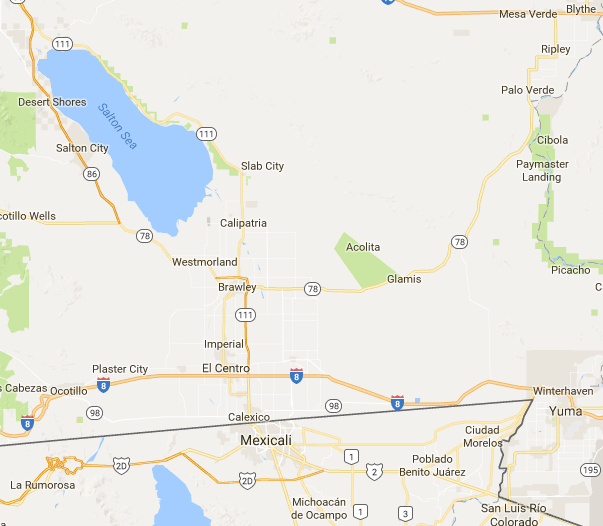Hello all!
During my
time here at CCEPS, I have come across several documents that have been of
interest to me. Today, I would like to share more about one of my favorite
documents that has taught me about an event in southern Californian history
that I didn’t know about until yesterday. While working on metadata for the Imperial
Valley Records items I have scanned, I revisited the following document: “Letter
to N. W. Stowell of California Development Company from Thos. L. Woolwine.”
Stowell inquired with Woolwine about representation in the case of California
Development Company vs. the Imperial Land Company. To better understand what
this court case was talking about, I did a little research.
In previous
posts, I have talked about the Salton Sea in relation to the development of the
All-American Canal in the Imperial Valley. This canal was not, however, the
first in the region. At the turn of the century, the California Development
Company (previously known as the Colorado River Irrigation Company) built the
Alamo/Imperial Canal, which was to irrigate and provide water for the farming
communities in the Imperial and Coachella Valleys by diverting water from the
Colorado River. The Salton Sink area (what we know now as the Salton Sea) was
fertile for a short time. After heavy rains caused the Colorado River to
overflow, this higher influx of water brought more silt through the Imperial
Canal and caused blockage. This blockage led to dikes breaking, canals
overflowing, and an infrastructure disaster that completely altered the course
of history for the Imperial and Coachella Valleys. Massive flooding destroyed
farms, submerged a town, and changed the environmental face of the Salton area.
The silt from the Colorado River poured into the Salton Sink area and
eventually formed what we now call the Salton Sea. The California Development Company
faced several lawsuits from farmers and other land companies in the area and
eventually went bankrupt. In 1911, the Imperial Irrigation District formed
through a collective of farmers and local citizens, and from this year forward,
this organization managed the development of water infrastructure in the area. With
the context of this incident in mind, this helps explain some of the fears facilitating
the creation of the All-American Canal. The aggressive advertising, including
xenophobia against Mexico, and calls to rally around the support of the
financing bills in Congress have a historical context with this in mind. Citizens
of the Imperial and Coachella Valleys needed water, but they needed the canal
to be built to combat flooding.
The
documents tell a story, especially when placed in conversation with each other.
By digitizing these documents, hopefully other archives patrons will be able to
read through the documents I have had the pleasure of looking over while
digitizing.
Normal
0
false
false
false
EN-US
X-NONE
X-NONE
/* Style Definitions */
table.MsoNormalTable
{mso-style-name:”Table Normal”;
mso-tstyle-rowband-size:0;
mso-tstyle-colband-size:0;
mso-style-noshow:yes;
mso-style-priority:99;
mso-style-parent:””;
mso-padding-alt:0in 5.4pt 0in 5.4pt;
mso-para-margin-top:0in;
mso-para-margin-right:0in;
mso-para-margin-bottom:10.0pt;
mso-para-margin-left:0in;
line-height:115%;
mso-pagination:widow-orphan;
font-size:11.0pt;
font-family:”Calibri”,”sans-serif”;
mso-ascii-font-family:Calibri;
mso-ascii-theme-font:minor-latin;
mso-hansi-font-family:Calibri;
mso-hansi-theme-font:minor-latin;}




 So, as you can see, it’s located on the border between southern California and Mexico. The document I’m about to describe illustrates some of the social, economic, and political power dynamics that took place at the dawn of the twentieth century in this region.
So, as you can see, it’s located on the border between southern California and Mexico. The document I’m about to describe illustrates some of the social, economic, and political power dynamics that took place at the dawn of the twentieth century in this region. 